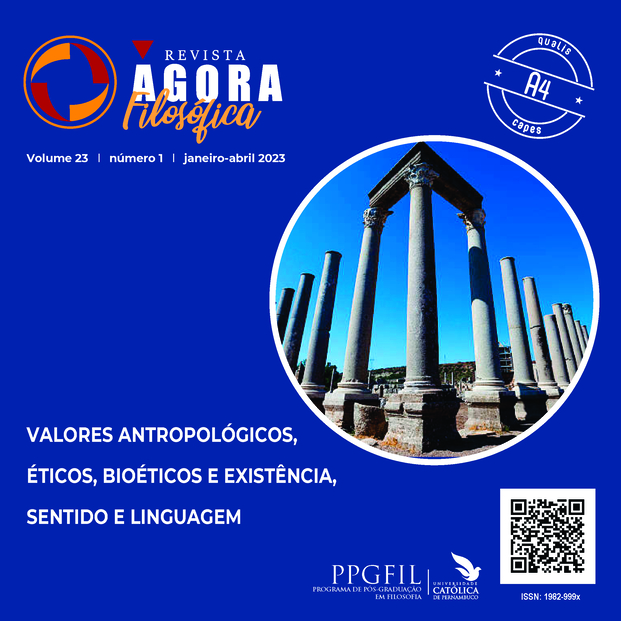Deaf identity and subjectivity in the school space: fragments of na interventional experience
DOI:
https://doi.org/10.25247/P1982-999X.2023.v23n1.p97-114Keywords:
Teacher, Deaf child, Affectivity, Learning, IdentityAbstract
This analysis is the result of an interventional investigation developed in a deaf school in Recife about the identity and subjectivity of deaf students in their relationship with the listening teacher who mediates and facilitates learning. The investigation aimed to analyze the affective relationships in the interlocutions between the interlocutors of the pedagogical process through a qualitative analysis of speech fragments of these actors, expanding, that way, the theoretical-practical knowledge about the learning possibilities of deaf children and teenagers through recognition and acceptance of its singularity, due to its natural gesture-visual language. With that purpose, we could recognise the human value of interpersonal relationships, that is, we are all human beings. So, the dimension of teaching requires an understanding of an attitude of care. Both deaf children and deaf teenagers deserve a decent and humane environment to live and learn. It is important to relate this dimension of human life, in which people with disabilities deserve to be included and valued as human beings. Therefore, the meaning and valuation of the psyche and learning relationship, deaf identity, impelling deaf people to see their own identity in this relationship.
Downloads
References
BRASIL. LEI Nº 10.436, de 24 de abril de 2002. Dispõe sobre a Língua Brasileira de Sinais - Libras e dá outras providências. Brasília, DF: Presidência da República, 2002. Disponível em: https://www.planalto.gov.br/ccivil_03/leis/2002/l10436.htm. Acesso em: 20 set. 2020.
BRASIL. Decreto Nº 5.626, de 22 de dezembro de 2005. Regulamenta a Lei nº 10.436, de 24 de abril de 2002, que dispõe sobre a Língua Brasileira de Sinais - Libras, e o art. 18 da Lei nº 10.098, de 19 de dezembro de 2000. Brasília, DF: Presidência da República, 2005. Disponível em: https://www2.camara.leg.br/legin/fed/decret/2005/decreto-5626-22-dezembro-2005-539842-publicacaooriginal-39399-pe.html. Acesso em: 20 set. 2020.
BRASIL. Lei nº 14.191 2021. Altera a Lei nº 9.394, de 20 de dezembro de 1996 (Lei de Diretrizes e Bases da Educação Nacional), para dispor sobre a modalidade de educação bilíngue de surdos. Brasília, DF: Presidência da República, 2002. Disponível em: http://www.proae.ufu.br/legislacoes/lei-no-14191-2021-sobre-modalidade-de-educacao-bilingue-de-surdos#:~:text=Lei%20n%C2%BA%2014.191%202021%20%2D%20sobre%20a%20modalidade%20de%20educa%C3%A7%C3%A3o%20bil%C3%ADngue%20de%20surdos,Portal%20PROAE&text=Altera%20a%20Lei%20n%C2%BA%209.394,de%20educa%C3%A7%C3%A3o%20bil%C3%ADngue%20de%20surdos. Acesso em: 20 set. 2020.
BRASIL. Ministério da Educação. Aplicativo de jornal para os surdos é lançado pela TV Ines. Disponível em: http://portal.mec.gov.br/component/tags/tag/33784#:~:text=A%20popula%C3%A7%C3%A3o%20de%20surdos%20%C3%A9,do%20pa%C3%ADs%20e%20do%20mundo. Acesso em: 20 jan. 2023.
BRITO, Lucinda Ferreira. (Org.). Educação especial: língua brasileira de sinais. v. III. São Paulo: SEESP, 1997. Série Atualidades Pedagógicas, n. 4.
CARMOZINE, Michelle M.; NORONHA, Samanta C. C. Surdez e libras: conhecimento em suas mãos. São Paulo: Hub Editorial, 2012.
GOLDFELD, Márcia. A criança surda: linguagem e cognição numa sócio-interacionista. 7. ed. São Paulo: Plexus, 2002.
DUBARD, José Elias de Moura Rocha; MESQUITA, Leila dos Santos. Mediação pedagógica e inclusão: jogo de xadrez em escola bilingue para surdos. In: LIRA, Mirtes Ribeiro de (Org.). A construção dos direitos da pessoa com deficiência: estudos sobre a inclusão educacional pela Universidade de Pernambuco. Rio de Janeiro: Wak Editora, 2022.
LUZ, Renato Dante. Cenas surdas: os surdos terão lugar no coração do mundo? São Paulo: Parábola, 2013.
MARTINS, Lígia Márcia. O desenvolvimento do psiquismo e a educação escolar: contribuições à luz da psicologia histórico-cultural e da pedagogia histórico-crítica. Campinas: Autores Associados, 2013.
PALANGANA, Isilda Campaner. Desenvolvimento e aprendizagem em Piaget e Vygotsky: a relevância do social. 5. ed., São Paulo: Summus, 2001.
QUADROS, Ronice Müller de. Educação de surdos: a aquisição da linguagem. Porto Alegre: Artmed, 2008.
REILY, Lúcia H. As imagens: o lúdico e o absurdo no ensino de arte para pré-escolares surdos. In: SILVA, Ivani Rodrigues; KAUCHAKJE, Samira; GESUELI, Zilda Maria (Orgs.). Cidadania, surdez e linguagem. São Paulo: Plexus, 2003.
SÁ, Nídia Regina Limeira de. Cultura, poder e educação de surdos. 2. ed., São Paulo: Paulinas, 2010.
SACKS, O. Vendo vozes: uma viagem ao mundo dos surdos. Tradução de Laura Teixieira Motta. São Paulo: Schwacz, 1989.
VYGOTSKY, Lev Semenovich. A construção do pensamento e da linguagem. 2. ed. Tradução de Paulo Bezerra. São Paulo: Martins Fontes, 2009.
VYGOTSKY, Lev Semenovich. Psicologia pedagógica. São Paulo: Martins Fontes, 2010.
VYGOTSKY, Lev Semenovich. Fundamentos de defectologia. Obras Escogidas - V. Madri: Antonio Machado, 2012.
BRASIL. Ministério da Educação. Aplicativo de jornal para os surdos é lançado pela TV Ines. Disponível em: http://portal.mec.gov.br/component/tags/tag/33784#:~:text=A%20popula%C3%A7%C3%A3o%20de%20surdos%20%C3%A9,do%20pa%C3%ADs%20e%20do%20mundo. Acesso em: 20 jan. 2023.
Brasília, DF: Ministério da Educação, 2010. Disponível em: http://portal.mec.gov.br/index.php?option=com_ content&view=article&id=12814&Itemid=872. Acesso em: 15 dez. 2018.
Downloads
Published
Issue
Section
License
Copyright (c) 2023 Albenise de Oliveria Lima, Andrea Vaz de Moura Rocha, Maria Verônica Pereira do Nascimento

This work is licensed under a Creative Commons Attribution 4.0 International License.
You are free to:
- Share — copy and redistribute the material in any medium or format for any purpose, even commercially.
- Adapt — remix, transform, and build upon the material for any purpose, even commercially.
- The licensor cannot revoke these freedoms as long as you follow the license terms.
Under the following terms:
- Attribution — You must give appropriate credit , provide a link to the license, and indicate if changes were made . You may do so in any reasonable manner, but not in any way that suggests the licensor endorses you or your use.
- No additional restrictions — You may not apply legal terms or technological measures that legally restrict others from doing anything the license permits.
Notices:
You do not have to comply with the license for elements of the material in the public domain or where your use is permitted by an applicable exception or limitation .
No warranties are given. The license may not give you all of the permissions necessary for your intended use. For example, other rights such as publicity, privacy, or moral rights may limit how you use the material.
















